The Rise and Fall of a McMansion: From Luxury to Abandonment
In many suburban neighborhoods across the country, the story of once-loved homes transforming into abandoned structures waiting for demolition is becoming increasingly common. Such is the story of a property that began its life as a single-family ranch-style bungalow in the 1960s, only to be replaced by three extravagant McMansions in the early 2000s. This property, which once boasted a large backyard surrounded by mature trees, has witnessed several phases of transformation that reflect both the growing demand for housing and the rapid development of communities in once quiet areas. Today, these mansions stand in a state of decay, their windows shattered, their rooms stripped bare by vandals, awaiting the wrecking ball. These homes, once symbols of affluence and luxury, are now reduced to empty shells, soon to make way for a new era of townhouses aimed at accommodating the growing population of the region.
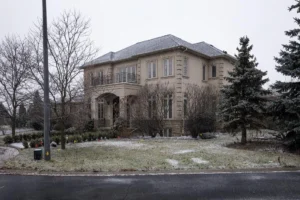
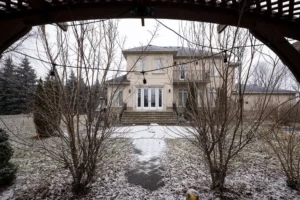
INSIDE PHOTOS GO BELOW!
The Ranch House and the Dream of Suburban Life
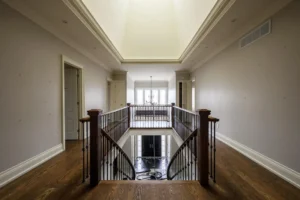



MORE PHOTOS BELOW!
The tale begins in the 1960s, when a modest ranch-style bungalow stood on a large plot of land. The house, likely built in the post-WWII boom era, was emblematic of the American Dream for many families—affordable, comfortable, and situated in a peaceful neighborhood where families could settle down and raise their children. A large backyard, complete with a few mature trees, would have been a sanctuary for the children of the family, a place for picnics, summer games, and memories. The bungalow might have been typical of its time, but it offered stability and warmth, and its presence in the neighborhood helped shape the character of the area for many years.

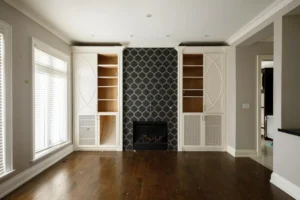

MORE PHOTOS BELOW!
This home, like many others of its era, represented a simpler, quieter time—a time when suburban living was an ideal for families seeking comfort and peace away from the bustle of the city. Yet, as time marched on, the suburban dream shifted. The quiet streets, once peaceful and full of large backyards, began to be eyed by developers eager to capitalize on the growing need for housing in the rapidly expanding regions around major cities.

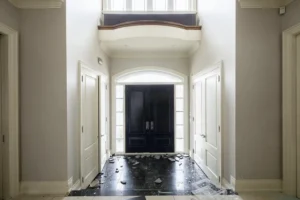
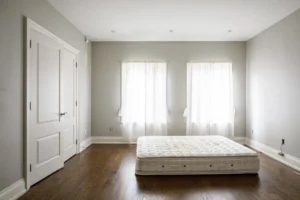
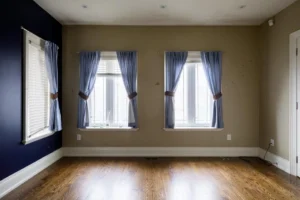
The McMansion Era: A Symbol of Overindulgence and Opulence
By the early 2000s, as the population of the area swelled and the demand for more housing intensified, the single-family home on the property was sold and torn down to make way for three large McMansions. These sprawling, over-the-top homes, each over 4,000 square feet, were built by the same extended family who bought the land and developed the properties.

The McMansion was the embodiment of luxury and excess. It was characterized by oversized rooms, high ceilings, and expansive, often ostentatious, designs. These homes, designed to impress and evoke a sense of grandeur, were a symbol of the booming real estate market and the growing desire for status through material wealth. The McMansions were equipped with the latest high-end amenities and high-tech features, with marble countertops, stainless steel appliances, and sprawling outdoor entertainment areas.

Despite their appeal to buyers at the time, these homes were also emblematic of a broader trend in suburban development: the rise of mass-produced luxury. The homes were large but lacked the personality and charm of earlier architectural styles. The rapid expansion of suburban communities fueled a construction boom, where houses of this scale became the norm, replacing smaller, more modest homes like the original bungalow.
A Family Home Becomes a Developer’s Playground
The three McMansions were not just a product of development; they were the product of an extended family of developers who saw an opportunity to make a substantial profit by selling their lavish homes in a rapidly growing region. These developers lived in the homes for a time, occupying them as their personal residences. For a while, it must have seemed like a dream realized—a lavish estate, nestled in a suburban neighborhood, the perfect place to raise children while making a substantial financial gain from the sale of the properties.
However, as the years went on, the neighborhood began to change. The family homes they had built were no longer the latest trend in luxury, and the demands of the real estate market shifted. New, smaller but more practical housing options began to take root in the area, with townhouses becoming the new desirable model for accommodating the growing number of families looking to settle in the region.
As the family moved out and the homes were left vacant, the once vibrant McMansions began to take on a different role—one that reflected the passing of time and the end of an era. Left empty for months, the once-pristine homes began to attract the attention of vandals.
The Final Days of the McMansions
Today, the McMansions sit in a state of disrepair, awaiting demolition. The properties are no longer symbols of affluence and luxury; instead, they stand as grim reminders of the impermanence of material wealth. Vandals have found their way into the abandoned homes, using the once-beautiful interiors as a canvas for destruction. What was once a grand living room with gleaming floors and expensive furniture is now an empty shell, its walls covered in graffiti, the windows shattered, and the fixtures ripped out.
Over the past few months, the damage has escalated. What was once a property that commanded attention has become a blighted corner of the neighborhood, a place where decay sets in quicker than one would expect. As the homes deteriorate, so does the sense of loss felt by those who remember the way the neighborhood once looked.
For some, this decay may symbolize the decline of a particular kind of suburban luxury—the McMansion, a house built for opulence but devoid of character. For others, the destruction might be seen as a metaphor for the rapid changes in the real estate market, where new developments quickly replace the old, leaving behind abandoned spaces and forgotten memories.
The Future: Townhouses for the Growing Population
The McMansions, once proud examples of luxury, are set to make way for a new phase of development: townhouses. The vision for the area now centers on accommodating the increasing number of families in the rapidly growing region. The new townhouses, expected to number up to 70, will provide a different kind of living space, one that is smaller, more practical, and more in line with the evolving needs of the community. These homes will likely be more affordable and better suited for the population influx, offering compact living spaces that are functional rather than extravagant.
While the new development is an inevitable response to a growing population and the need for more affordable housing, it also marks the end of an era for the neighborhood. The McMansions, which were once symbols of opulence and excess, will soon be replaced by homes that are designed not for luxury, but for practicality and utility. The townhouses will provide homes for families who need them, but they will also erase the remnants of a bygone era—an era when McMansions symbolized success and affluence.
A Reflection on Change and Memory
As the neighborhood transforms once again, one can’t help but reflect on the changing nature of suburban development and the way houses are used, valued, and remembered. The ranch-style bungalow, the McMansions, and now the townhouses represent different moments in time, each reflecting the shifting desires and needs of a growing community. While the McMansions may have represented the pinnacle of luxury for some, their abandonment highlights the fleeting nature of these ideals in the face of evolving trends and economic pressures.
In the end, the story of this property is not just about the physical houses that have come and gone. It’s about the larger patterns of growth, change, and loss that shape our cities and communities. As the townhouses take shape in the place of the decaying McMansions, one can only wonder what future generations will think of the era that came before them—and what memories will remain in the ruins of the homes that once stood proud and full of life.